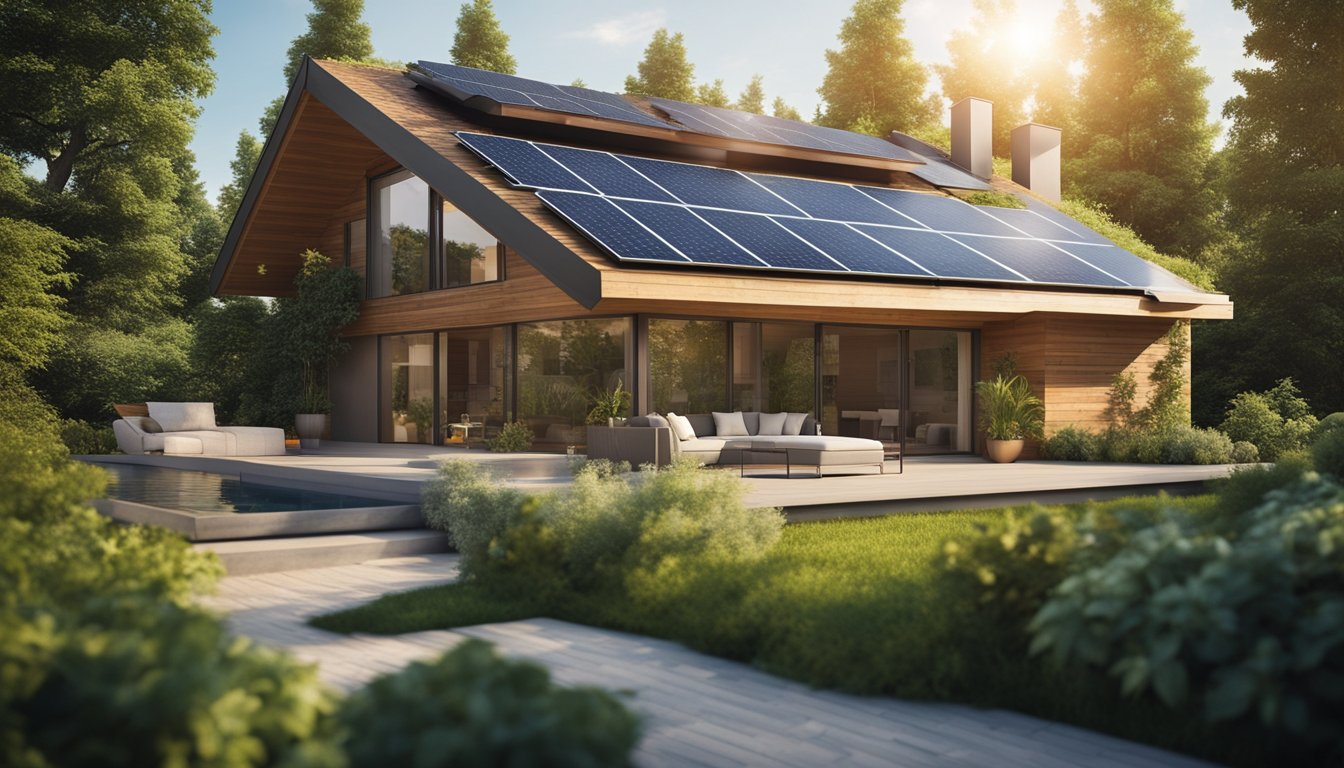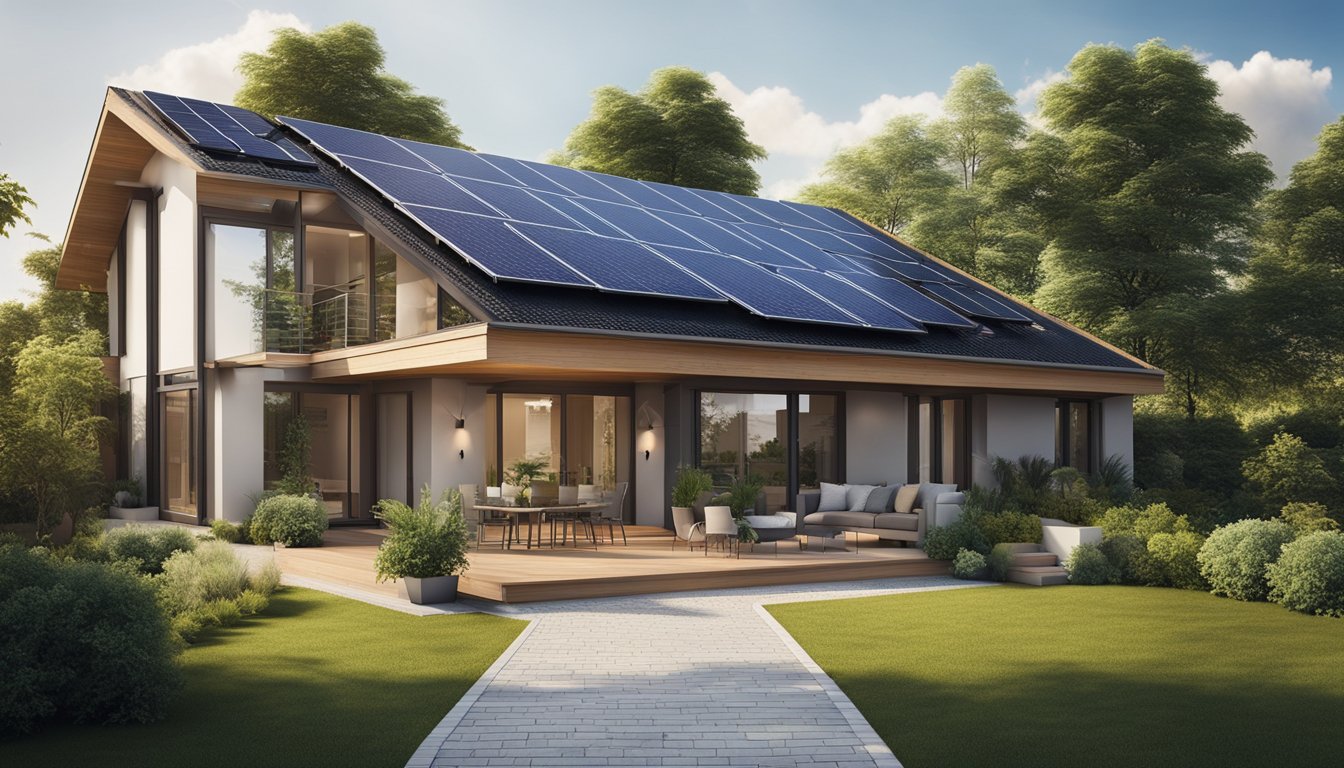Late updated: 03 Apr 2025 14:04
Written by: Sarah Hollister
Benefits Of Eco-Friendly Home Insulation: Enhancing Comfort and Efficiency
Insulating our homes is a pivotal step in enhancing energy efficiency and reducing environmental impact. Eco-friendly insulation materials like sheep's wool, denim, and cellulose play a critical role in achieving these goals. Switching to eco-friendly home insulation can help us significantly reduce our carbon footprint while also contributing to climate change mitigation. As electricity bills soar and environmental concerns mount, opting for sustainable insulation is a compelling choice.

Eco-friendly insulation does more than just regulate temperatures. It aids in improving indoor air quality by using non-toxic materials, reducing the reliance on heating and cooling systems, and ultimately lowering energy costs. These sustainable solutions preserve natural resources, representing a harmonious blend of technology and nature.
By making informed insulation choices, we can create comfortable and energy-efficient living spaces. This movement towards environmentally responsible housing allows us to navigate our role in the global effort to protect our planet.
Key Takeaways
- Eco-friendly insulation reduces carbon emissions and energy costs.
- It improves indoor air quality and conserves natural resources.
- Sustainable choices contribute to climate change mitigation.
Understanding Eco-Friendly Insulation
Eco-friendly insulation offers significant advantages by enhancing both energy efficiency and environmental sustainability. By utilising sustainable materials, optimising thermal resistance, and introducing innovative solutions, we address energy needs without compromising our planet's resources.
Materials and Types
Eco-friendly insulation employs a range of sustainable materials, including recycled fibres, sheep's wool, and plant-based products. Fibreglass insulation, a common choice, is often derived from recycled glass. Another popular option, cellulose insulation, is primarily made from recycled paper products. This not only reduces waste but also provides excellent thermal properties.
Spray foam insulation, specifically Icynene spray foam, has gained popularity due to its ability to form an air-tight seal. Closed-cell foam within this type of insulation further enhances structural integrity. Natural insulation sources, like cork and cotton, offer biodegradable solutions with low embodied energy, supporting sustainable construction practices.
Measuring Effectiveness: R-Value
R-value is essential for measuring insulation effectiveness, indicating a material's resistance to heat flow. A higher R-value signifies better insulation, which translates to greater energy efficiency. We consider this when selecting eco-friendly insulation materials, ensuring they provide adequate thermal resistance for different climates and building needs.
For instance, closed-cell spray foam boasts a high R-value, making it suitable for regions with extreme weather. In contrast, fibreglass and cellulose offer variable R-values, allowing customisation based on specific project requirements. Understanding these values aids in making informed decisions that maximise energy savings and environmental benefits.
Innovative Options in the Market
The insulation market continually evolves, introducing new eco-friendly products. Icynene spray foam is one of the standout innovations. It expands upon application, filling gaps effectively and improving energy efficiency. Notably, it offers superior air and moisture control compared to traditional materials.
Another innovation is the integration of phase-change materials (PCMs). These materials absorb and release heat, maintaining consistent indoor temperatures and reducing the reliance on heating and cooling systems. Recycled materials, such as denim and newspaper composites, continue to gain traction for their sustainability and performance. By embracing these advances, we enhance our efforts towards constructing greener, more efficient homes.
Benefits of Eco-Friendly Home Insulation

Utilising eco-friendly insulation offers numerous advantages beyond traditional methods. It reduces energy consumption, enhances comfort by minimising temperature fluctuations, and contributes positively to the environment. Additionally, it impacts health and safety positively by offering non-toxic alternatives.
Energy Efficiency and Cost Savings
Eco-friendly insulation significantly boosts a home's energy efficiency. By creating a tighter seal, it reduces energy loss, leading to lowered heating and cooling costs. This results in decreased energy bills over time. Energy-efficient materials, such as cellulose and sheep's wool, offer better insulation properties compared to conventional products. They are capable of adapting to various climate conditions, thus reducing the need for excessive use of HVAC systems. As we improve our energy efficiency, our reliance on non-renewable resources is reduced, aligning with sustainable living goals.
Improving Home Comfort
Comfort at home is largely dependent on consistent indoor temperatures. Eco-friendly insulation effectively minimises drafts and temperature fluctuations. By maintaining a stable indoor climate, it ensures enhanced comfort all year round. Additionally, these materials offer better soundproofing, reducing external noise and creating a serene indoor environment. The breathability of certain eco-friendly materials, like cork and cotton, also helps prevent moisture buildup, reducing the risk of mould and mildew. Therefore, investing in eco-friendly options leads to a more comfortable living space overall.
Environmental Impact
On an environmental level, eco-friendly insulation contributes immensely to sustainability. It utilises renewable resources, decreases carbon footprints, and supports efforts to conserve natural resources. By selecting materials such as recycled cotton or cork, we can significantly reduce the waste that ends up in landfills. These materials are not only biodegradable but also have lower embodied energy compared to their synthetic counterparts. Thus, by choosing eco-friendly insulation, we play an active role in environmental preservation and reducing greenhouse gas emissions.
Health and Safety Considerations
Eco-friendly insulation is generally safer for both humans and the environment. Many conventional insulations contain harmful chemicals that can off-gas, posing health risks. In contrast, products like wool and cellulose are non-toxic and do not emit volatile organic compounds (VOCs). They provide a safer indoor air quality, which is crucial for homes with children, elderly residents, or individuals with allergies. Furthermore, these materials are often resistant to fire, pests, and mould, offering an extra layer of safety to our homes. By opting for eco-friendly options, we ensure a healthier and safer living space for all occupants.
Frequently Asked Questions

Eco-friendly home insulation has gained popularity for its environmental benefits, energy efficiency, and health advantages. Understanding these key aspects helps us make informed decisions about sustainable living solutions.
What are the key environmental advantages of opting for eco-friendly home insulation?
Eco-friendly insulation often utilises renewable and sustainable resources. These materials generally have lower embodied energy, meaning they require less energy for production and transportation. By reducing waste through greater durability and contributing to carbon sequestration, they minimise our ecological footprint.
Can eco-friendly home insulation significantly reduce energy consumption?
Yes, eco-friendly insulation can considerably enhance energy efficiency. By maintaining better temperature regulation in homes, it reduces the need for heating and cooling, leading to decreased energy consumption. Properly installed, it can translate to significant savings on energy bills.
Which natural insulating materials offer the best thermal performance for homes?
Materials like cellulose, sheep's wool, and hemp provide excellent thermal performance. Cellulose insulation, in particular, is highly regarded for its thermal properties and low environmental impact. These materials effectively trap heat and keep homes comfortable across seasons.
In terms of health and safety, how does eco-friendly insulation compare to traditional options?
Eco-friendly insulation is typically safer with fewer health risks. It avoids toxic chemicals and volatile organic compounds, improving indoor air quality. This makes it especially ideal for families seeking a healthier living environment. Traditional insulation options may not always offer the same level of safety.
How cost-effective is eco-friendly home insulation in the long term?
While the initial investment may be higher, eco-friendly insulation often proves more economical over time. Its durability reduces the need for frequent replacements. The energy savings it offers further enhance its cost-effectiveness, providing value through reduced utility expenses.
What considerations should be made when choosing between different types of eco-friendly insulation?
When selecting eco-friendly insulation, we should consider factors like thermal performance, cost, and environmental impact. The specific needs of our home, such as climate and building design, play a crucial role. Consulting with a professional can offer insights tailored to our unique situation.
